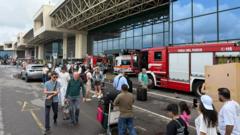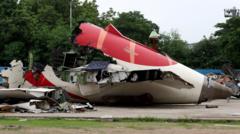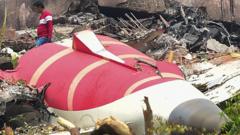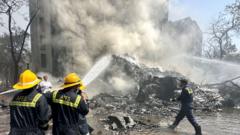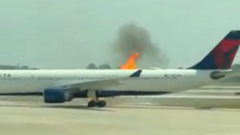As the IndiGo passenger jet ascended from New Delhi towards Srinagar, passengers were caught off guard when the pilot announced the need to fasten seatbelts. Soon after, a sudden and fierce hailstorm struck, sending the plane into a treacherous plunge. Sheikh Samiullah, a frequent flyer, recounted the escalating panic on board as passengers screamed, and even flight attendants were visibly shaken. “They were calling their gods, we were calling our gods,” he reflected, describing the frightening atmosphere where prayers erupted both in Hindi and Arabic.
The tumultuous descent, lasting around five to six minutes, brought visible fear as the aircraft jolted dangerously. Samiullah shared a video on social media capturing the chaos within the cabin as passengers braced for what they feared could be their last moments. “Nobody was expecting we would go for a safe landing,” he added.
Remarkably, the aircraft managed to land safely in Srinagar about twenty minutes after the onset of turbulence. Passengers deplaned to see significant damage to the plane's nose, evidently caused by the hail. IndiGo confirmed the severe weather encounter in a statement, noting that the crew adhered to established protocols, ensuring a safe landing.
According to the Federal Aviation Administration (FAA), hail and turbulence pose significant dangers during thunderstorms. The FAA explained that hail can form rapidly and cause severe aircraft damage, particularly stones larger than half an inch. Safety protocols emphasize the use of weather radar to avoid such perilous conditions, as passenger aircraft are typically not equipped to handle large hailstone impacts unscathed. Past incidents highlight the potential dangers, like the tragic turbulence accident involving a Singapore Airlines flight that led to a fatality and many injuries.
As this story unfolds, insights into passenger safety during severe weather continue to spark discussion on aviation protocols and preparedness. Monika Cvorak contributed reporting.





